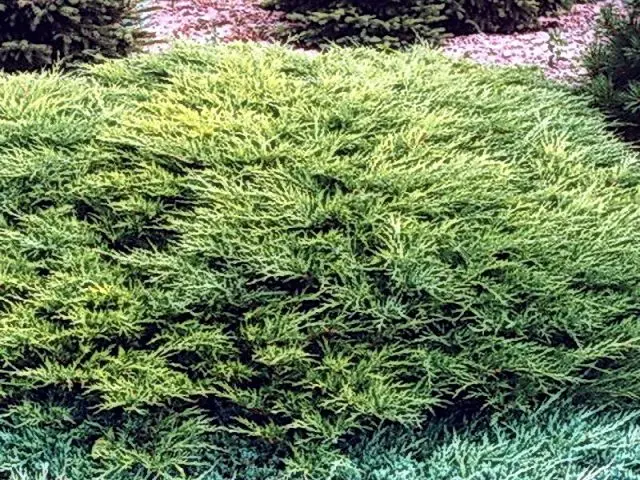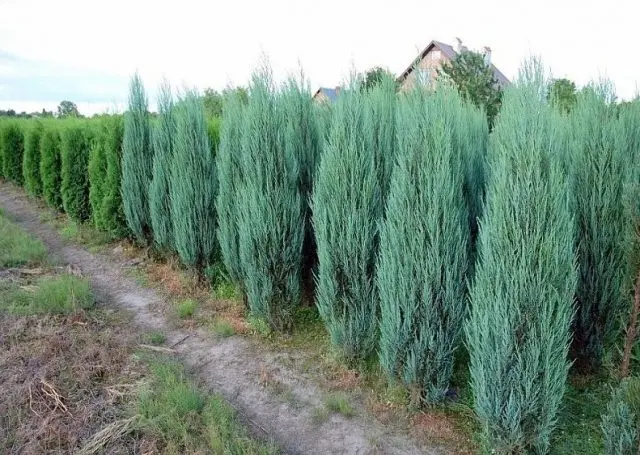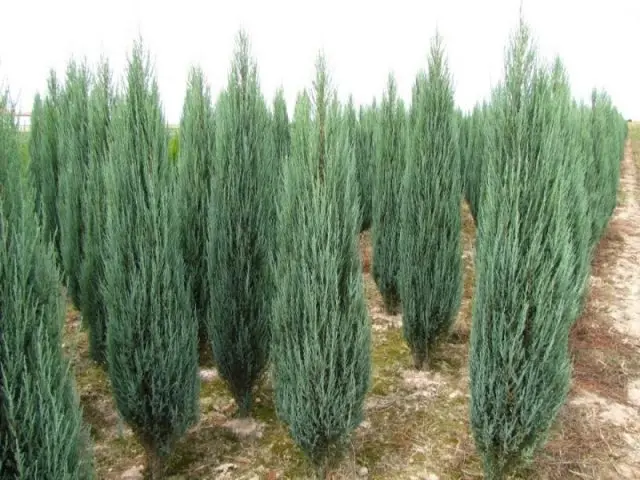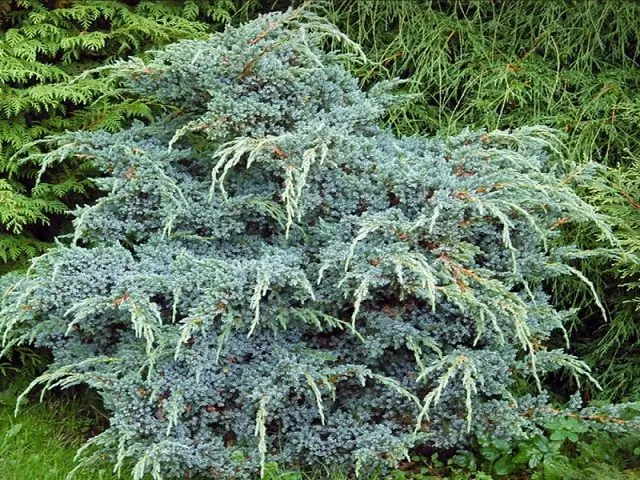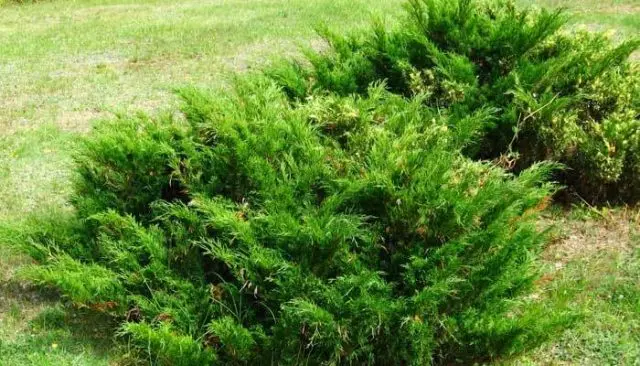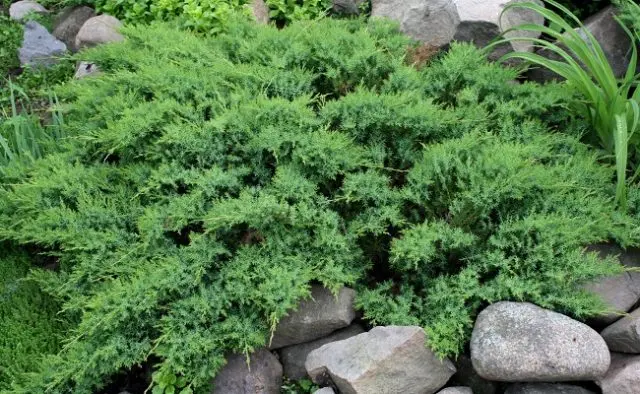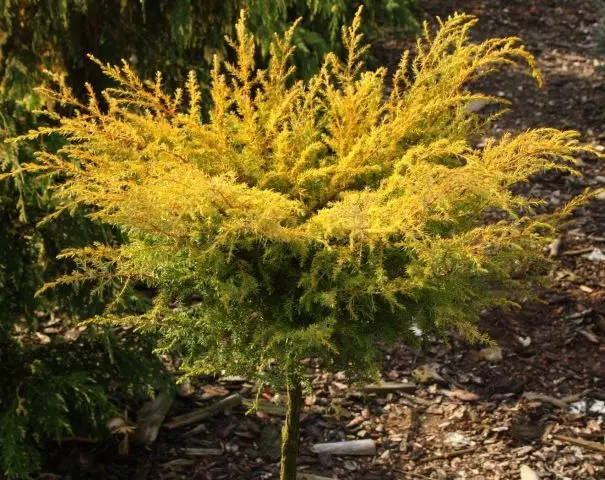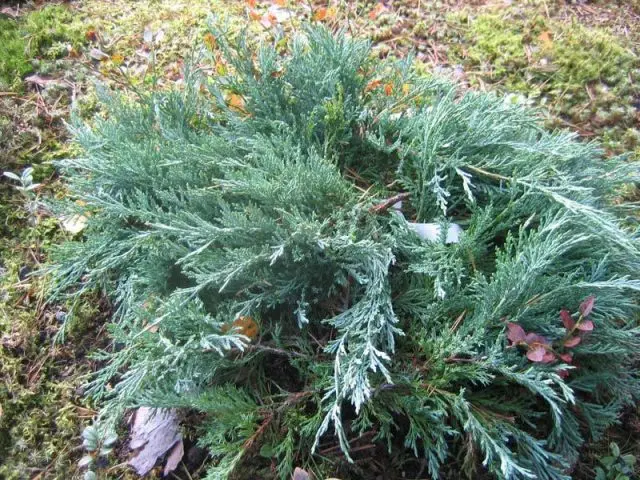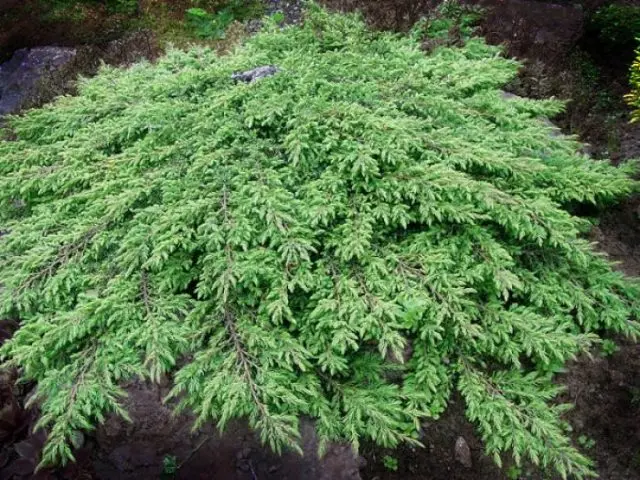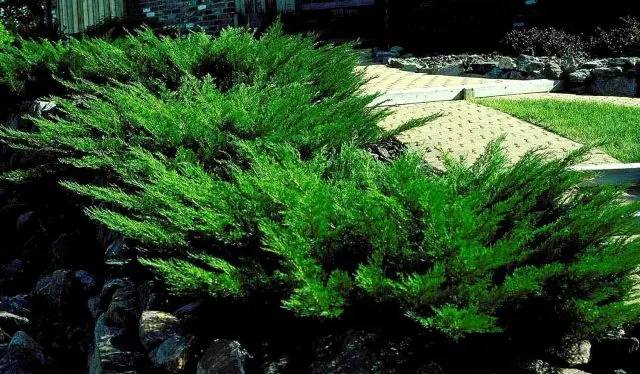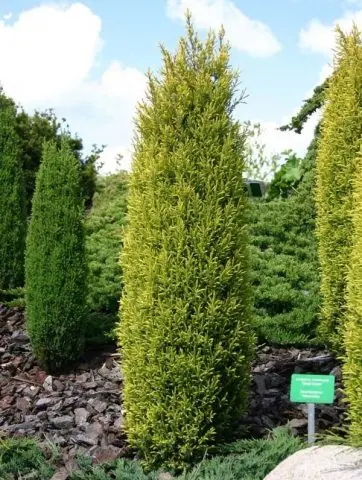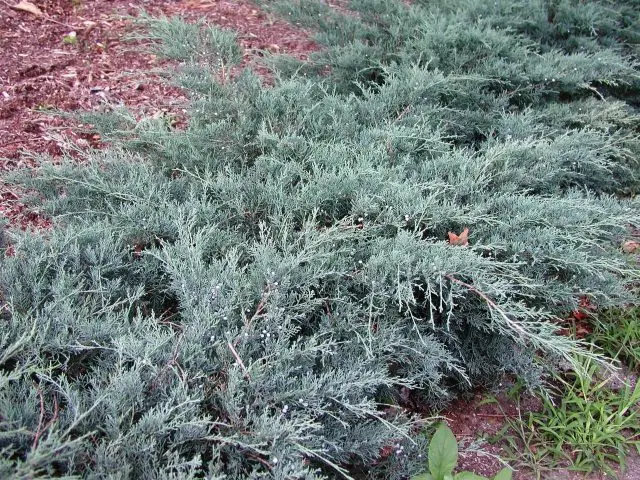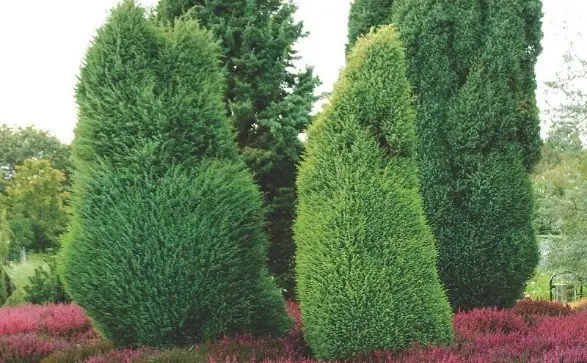Juniper is distributed throughout Our Country. It can be seen in forests, parks and squares, in flower beds and individual alleys. It is important to know how juniper is planted and cared for in the Urals, Siberia, and the Moscow region. Culture feels good in these regions. For each of them, it is necessary to select zoned varieties, carry out care measures, taking into account weather conditions, characteristics of the variety and soils.
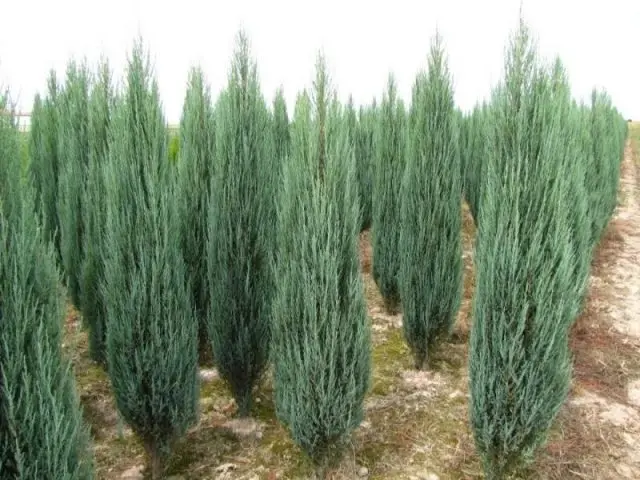
Juniper in the Urals
Juniper varieties grow in the Urals, which, in addition to performing decorative functions, produce edible berries. They are harvested for medicinal, culinary, and beverage uses. Of the species growing in the Chelyabinsk region, berries can be eaten from ordinary and Siberian juniper. In the Urals, in the forest, juniper grows as a shrub or tree. Its height is different – from specimens creeping along the ground, up to two meters. The berries of the plant are dark blue in color, have a bluish bloom. They have a spicy, sweet taste. The fruits ripen in September, but picking them is not very comfortable because of the needles of the plant. In the Urals, a collection method is common, which consists in spreading fabric under the conifer, and gently knocking on the branches of the tree and collecting berries that have already ripened and fall on the fabric.
In the Chelyabinsk region, the Cossack juniper grows, the shoots of which are poisonous, and you can distinguish it from non-poisonous varieties by the unpleasant smell of needles and berries. You can’t collect them and eat them.
Where does juniper grow in the Urals
Juniper is widely distributed throughout the Federation, from the border with Finland to the Yenisei River and the Chelyabinsk region. The growth area passes through the Southern Urals and the coast of the Belaya River.
Most of all in the Urals juniper Ordinary. This is a low (65 cm) creeping type shrub. Its diameter reaches 2 m.
It is quite difficult to take a photo of the juniper of the Kazatsky variety in the Urals, since the plant is listed in the Red Book of the region. Only in the south of the region can you find this culture.
Common juniper is widely distributed in coniferous, deciduous and mixed forests of the Chelyabinsk region. He loves the edges, clearings, well lit by the sun. In the Taganay National Park, the ephedra grows in the mountains, covering the slopes of Yurma, Kruglitsa and others.
Juniper varieties for the Urals
For landscaping gardens and parks, house territories, garden plots in the Ural region, you can use not only junipers that grow in the wild, but also other varieties that are grown in nurseries. The main conditions for choosing a variety will be unpretentiousness, the ability to endure harsh winters without shelter, withstand drought and bright sunlight.
These varieties include varieties of Ordinary, Chinese, Cossack and others:
- Arcadia. This is an unpretentious ground cover juniper. It is frost-resistant, prefers sunny places and dry soils. Ephedra is able to protect the soil from erosion, in addition, it tolerates gas pollution well. The plant has soft, light green needles and harmonizes well with low deciduous and coniferous trees. It tolerates a haircut easily, therefore it is successfully used to create a hedge. Juniper Arcadia has a height of up to 0,5 m and a crown diameter of 2,5 m. The winter hardiness of the culture is good;

- Glaucoma. The variety belongs to dwarf. Juniper has numerous thin, long shoots directed horizontally. The leaves of the plant fit snugly to the branches, the needles are bluish all year round, scaly in appearance. Ephedra grows well in lighted places, it also tolerates light shade. In the design of landscapes, planting a plant is recommended in group and single plantings. In the climatic conditions of the Urals, a young plant should be covered for the winter;

- Blue Arrow. Columnar Chinese juniper. The height of the tree is up to 5 m, the diameter is 1 m. The crown grows by 15 cm per year. The shoots are tightly pressed to the trunk, directed upwards. The needles of the plant are blue, scaly. The variety is frost-resistant, loves sunny places. Mainly used for hedges, can be grown in a container;

- Skyrocket. Juniper has a narrow crown, blue needles. The height of the tree is up to 10 m, the diameter is 1 m. Khvoinikov is photophilous, undemanding to the soil, tolerates shearing well. In winter, he needs a garter to a support so that the crown does not fall apart under the yoke of snow. The plant is winter hardy;

- Meyeri. Scaly juniper with funnel-shaped diverging shoots. Its needles are blue, thick, needle-like. The height of the shrub reaches 3 m, the diameter is 2 m. The culture prefers light drained soils. The winter hardiness of the plant is very high.

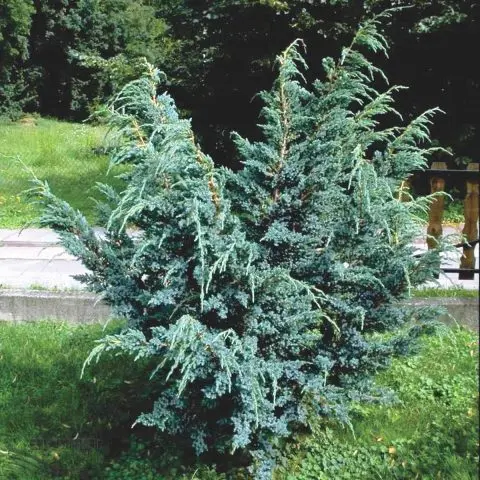
Planting and caring for juniper in the Urals
Juniper planting in the Urals is carried out with the snow melting – in late April-early May. For this:
- Prepare a pit 50 cm deep and 1 m in diameter.
- Drainage is laid on the bottom with a thickness of 20 cm.
- The root neck of the plant should be located 10 cm above the ground.
- The seedling is watered, the soil is poured into the voids and watered again.
- The trunk circle is mulched with peat, pine bark, a layer of 10 cm.
The first year, the seedling is regularly watered, covered for the winter. Feeding can be done after a year. Its time is spring. In autumn, fertilizers are undesirable due to the possible lack of time for the formation of shoots. Pruning for sanitary and cosmetic purposes is carried out in the spring, until the buds have blossomed, and also in August. For wintering, young plants should be covered, in adults – thoroughly (with a layer of up to 20 cm) mulch the trunk circles.
Juniper in Siberia
Common juniper grows in Siberia, it is called Veres. Coniferous evergreen easily tolerates temperatures below -50⁰oC, therefore, it is widely used for landings in harsh conditions.
For landscaping, varieties of different forms are used: from ground cover to bushes and trees. The height ranges from 0,5 m to 20 m. But the most common specimens in gardens are 3–4 m high. Fruits called cone berries ripen on them.
It is believed that a special species grows in the expanses of Siberia – the Siberian juniper. But scientists do not have a consensus on this. Many believe that this is just a variety of common juniper, which does not differ from it in any way, except for its geographical location. The plant originates from cypresses. It has the appearance of a shrub creeping along the ground. Its height is about 1 m.
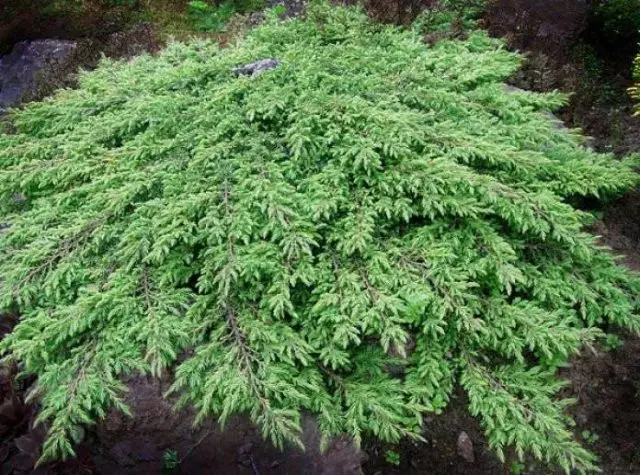
Where does juniper grow in Siberia
The most common in Siberia, as well as throughout Our Country, are three types of junipers: Cossack, Ordinary, Daursky.
- Ordinary – has the shape of a tree or bush. The more severe the climate, the lower the plant;

- Creeping Cossack – a low, widely spreading bush (up to 20 m wide), grows in the mountains of Siberia, densely covering their slopes. This plant especially loves the tops of the mountains, on which it links stones with roots, preventing landslides from developing;

- In the Siberian taiga and the forests of the Far East there is a variety Daursky: smaller, up to 60 cm high.

Junipers grow in western Siberia, in its northern part. They are dwarf forms that grow over large areas. Thickets of the plant can be observed on rocky areas in mountainous areas, in rare deciduous forests, in elfin cedars.
Juniper varieties for Siberia
Juniper has good frost resistance. For the conditions of Siberia, varieties are needed in which this indicator is especially pronounced:
- depression. Represents an evergreen coniferous shrub 0,3 m high and 1,5 m wide. The plant has beautiful golden needles. Young shoots are bright yellow, turning brown in winter. Juniper loves lighted places or weak partial shade. The plant is frost-resistant, not demanding on soils, does not tolerate dry air well, loves sprinkling. Its use in stony gardens, rock gardens is recommended. It goes well with deciduous and coniferous plants;

- Montana. This is a ground cover creeping horizontal shrub 0,5 m high and up to 2,5 m wide. It has green or gray-gray needles. The soil for juniper requires fertile, drained. The plant is photophilous, but can grow in partial shade, has high frost resistance. In design, it is used in single and group plantings as a ground cover;

- Green Carpet. Common juniper, dwarf type. Has a cushion crown. The annual growth is 25 cm. The young shoots are erect, but quickly droop and intertwine, form a bush 10 cm high and 1,5 m in diameter. On the branches of the culture there are green needles with a blue stripe and blue cones. The plant is unpretentious, frost-resistant, drought-resistant;

- Hibernica. This juniper variety in adulthood has a height of 3,5 m, a diameter of 1 m. A plant with a dense, narrow, columnar crown. Its branches are directed upwards, the needles are needle-shaped, bluish in color. The conifer grows slowly, it is frost-resistant, loves sunny places, but is unpretentious to the soil. Culture is intended for small and group compositions;

- Мace Juniper with widely spread branches, has a height of about 2 m, crown diameter – 5 – 7 m. The needles of the plant are bluish-green, with a bronze tint in winter. The shrub loves sunny areas, tolerates partial shade. The variety is frost-resistant, undemanding to soil fertility, does not tolerate their salinization and waterlogging.

Planting and caring for juniper in Siberia
In the harsh climatic conditions of Siberia, junipers Daursky, Far East and other acclimatized and zoned varieties grow.
Planting frost-resistant species is carried out according to the rules:
- the time of work is not earlier than the end of April, when the snow melts and the soil warms up;
- landing before winter is not worth it, the plant may not have time to take root;
- the place should be sunny;
- soil – sandy or sandy;
- no close occurrence of groundwater is required;
- it is necessary to prepare a hole 2-3 times larger than the juniper soil coma;
- in the landing pit, you need to add drainage from bricks, pebbles, sand 20 cm thick;
- the root neck is placed at ground level if the plant is young, and 6 cm above it if it is an adult;
- the trunk circle is mulched with cones, walnut shells, peat with a layer of 10 cm;
- watering should be plentiful.
Care for Siberian junipers consists in timely moisturizing, periodic feeding, pruning, shelter for the winter.
At first, after planting, watering should be regular, later they can be reduced. It is worth shading the seedling so that the needles do not burn in the sun. Top dressing is carried out until September. Otherwise, the conifer, after rapid growth, will not be able to prepare for winter, and the unripe shoots will freeze. Pruning is not required for most varieties. If necessary, it should be done in early spring or late summer.
In the first winter, juniper in Siberia is covered with spruce branches, burlap and other improvised material. Subsequently, this can not be done: the plants acclimatize and overwinter well.
Juniper in the Moscow region
Common juniper is the most common species in the Moscow region. It is listed in the Appendix to the Red Book of the Moscow Region, as it is endangered. Most often, trees are found in the Kuzminsky Forest Park, in Losiny Ostrov, on the slopes of the Klyazma River. Ephedra grows well on poor soils in light pine and birch forests. On more fertile lands, the juniper does not compete with fast-growing neighbors that drown it out. The culture can grow on the edges and under the canopy of the forest. Feels good on sandy soils and loams. Best of all, the plant develops where others are uncomfortable. Extremely negatively tolerates grass burning and transplantation.
Juniper varieties for the Moscow region
For growing junipers in the conditions of the Moscow region, there are many varieties that have different shapes, sizes, colors, and purposes:
- Horstmann. Juniper belongs to weeping species, has a very original look. When tying up the central stem, the conifer looks like a tree, and if this is not done, it looks like a shrub. In adulthood, it reaches a height of 3 m and a diameter of 3 m. The annual growth is 20 cm. The plant is winter-hardy, unpretentious, prefers sunny places. In the shade it can stretch out and lose its bright color;

- Gold Con. Slow growing juniper with a dense conical crown. In height, the plant reaches 2 m, has golden needles. Grows well in light, well-drained soils, loves sunny areas, and thins out in the shade. The variety is frost-resistant, suffers from snow pressure, so the plant needs to tie branches. Culture is used in landscaping parks, alleys;

- ГRay Owl. This is a sprawling bush juniper up to 1,5 m high and 4 m in diameter. Its needles are gray-green, 7 mm long. The branches grow horizontally, hanging down in the form of threads at the ends. The plant loves sunny areas and grows well on sandstones;

- Sorts Suezica, Virginian Burki, Kanaherti, and many others are also successfully used for landscaping in the suburbs.

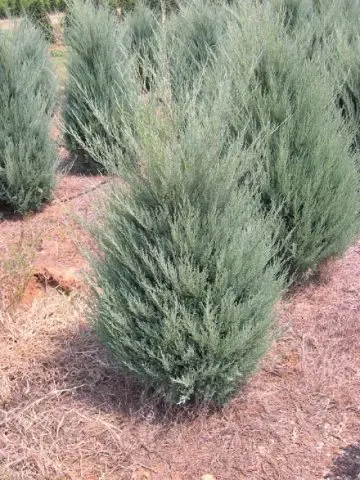
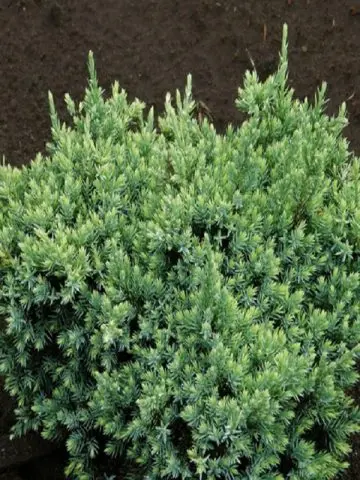
Planting and caring for juniper in the Moscow region
The planting of junipers in the Moscow region differs from a similar process in the Urals and Siberia, primarily in terms of timing. In the region near Moscow, conifers can be planted in early spring, summer (with a closed root system), autumn and winter (adult plants). Landing rules remain the same for all regions.
For top dressing in May and August, mineral fertilizers and organic matter are used. They are carried out twice per season: the first time in May, during the activation of growth, the second – in August. Pruning is carried out at the end of winter, before bud break. In the first year after planting, it is worth covering the seedlings for the winter from freezing and burning the needles in the spring sun.
Conclusion
Planting and caring for juniper in the Urals, in Siberia, the Moscow region does not differ much and does not present difficulties and special troubles. A large number of varieties acclimatized to any conditions in Our Country gives gardeners ample opportunities to decorate for many years the site, adjacent territories, alleys and squares.










